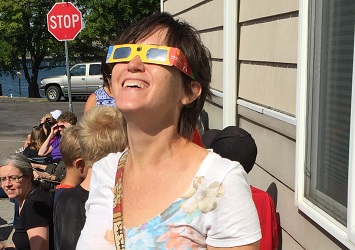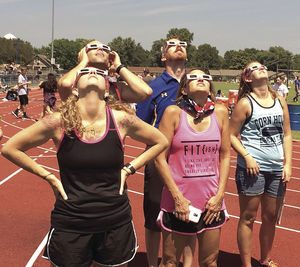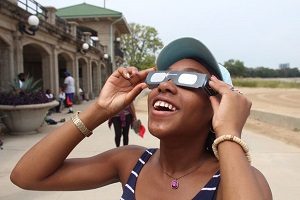I’m often asked how can you look up without scrunching your neck and compressing your spine. I agree that tasks that involve looking up are challenging, whether it’s looking up at a screen, painting your ceiling or gazing at the stars.
When looking up or looking down, I find it helpful to observe what small children do. You won’t often see a toddler bending the neck to look up or down. When they want to look up, the intention of their whole body is upward, and the spine continues to lengthen as they look up.
If you get a crick in your neck from looking upward, first stop and notice your self. Could it be that you are holding on to parts of your self that would prefer to be involved in looking upward? Could it be that there are parts of you working harder than necessary? Then think about why you are looking up. Are you really interested in it? (That’s a valid question… if not, why do it?!) If so, invite your spine to continue to lengthen as you look at whatever it is you’re really interested in looking at. What parts of you want to join in the movement as you do that?
As adults, we are able to bend just our necks so that only our faces are pointing upward like the people in the picture on the right. In fact, the people in that picture are pulling down in order to look up. This is what I call “unhappy movement”! On the other hand, the woman on the left looks really excited about what she’s looking at. While we can’t see the rest of her body, it looks like her body has an upward direction – and she’s not scrunching her neck! Her spine is lengthening! This is what I call “happy movement”!
If you’d like to learn more about how to discover ease in your movement, instrument playing, singing, walking, running, sitting, standing and more, check out more tips at www.discoverease.how or contact me at info@discoverease.how for a private lesson, workshop or online class.
You can sign up for my mailing list here to receive occasional newsletters with helpful information and information about Alexander Technique classes.




Recent Comments